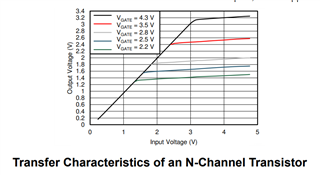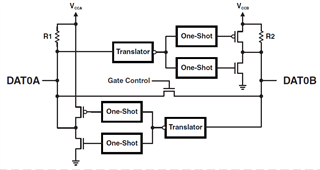Other Parts Discussed in Thread: TXS0108E
I'm considering using the TXS0206 in an application to interface an Intel Stratix 10 FPGA with 1.8V I/O to a 3.3V SD Card Interface. I'm struggling to understand the TXS0206 Vih and Vil specs, especially on the low side. The FPGA Vol is max 0.45V, but the TXS0206 requires Vil of only 0.15V. Considering that 0.45V is a common 1.8V Vol for many devices, how is it possible to drive the TXS0206 low with any 1.8V output?
Similarly for the high side, the FPGA Voh is min 1.35V, but the TXS0206 requires Vih of Vcc-0.2V, or 1.6V for a 1.8V Vcc. Considering that 1.35V is a common 1.8V Voh, how is it possible to drive the TXS0206 high with any 1.8V output?
I watched the videos explaining the operation of the LSF translators, which explain why the Vil is so low (to maintain Voh on the B-side of 0.4V, so there's about a 0.25V drop from A-side to B-side), but I can't figure out the corresponding reasoning for driving high.
Thank you.




